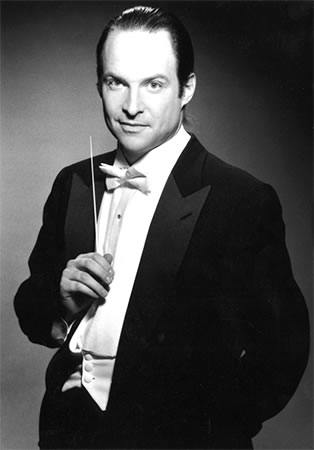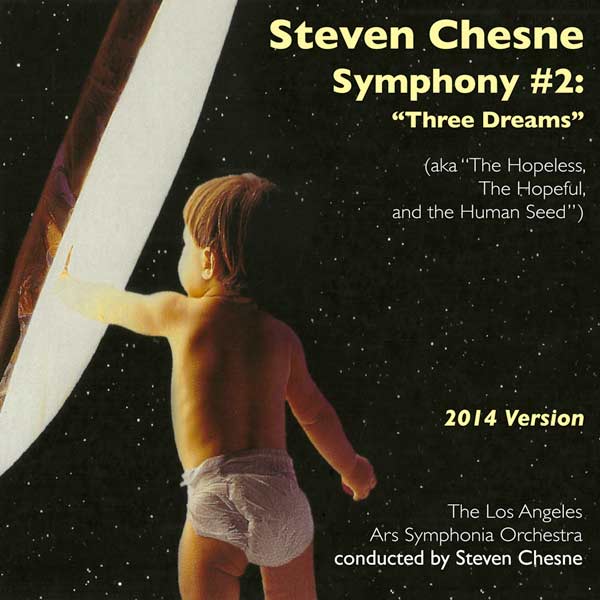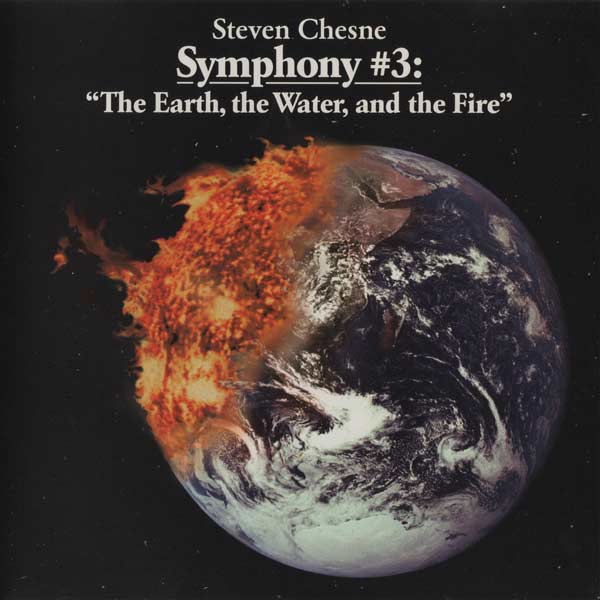

"The Seven Worlds of Doorsmith Bloom," is a cycle of seven programmatic symphonies which, while they stand alone as concert works, comprise a large-scale musical story when strung end to end.
The story of "The Seven Worlds of Doorsmith Bloom" follows its protagonist, ("Doorsmith" because he is a doormaker by trade, and "Bloom" as a metaphor for the blossoming of human consciousness), in his lifelong quest for resolution to the enigma brought about by his dreams, as illustrated in Symphony #2. This extended work uses mythological symbolism (in the vein of J.R.R. Tolkien or Richard Wagner) to tell the story of the human struggle, the yearnings of the soul, and the resilience of the human spirit.

This symphony depicts the three dreams of Doorsmith Bloom: dark and somber, optimistic and bright, and yearning or questing. This is a first-class recording with the Ars Symphonia Orchestra, comprised of many of the top concert-music performers in Los Angeles.
Part 2 of "The Seven Worlds of Doorsmith Bloom," known as: "Symphony #2: The Three Dreams" (a.k.a. "The Hopeful, the Hopeless, and the Human Seed") was composed in 1987 and recorded in 1996.
Click HERE to hear a newly edited, remastered recording of Symphony #2

"Accessible to most audiences on first hearing... an important and exciting new piece."
Daniel Lewis, Guest Conductor, Los Angeles Philharmonic"A vigorous and richly interpreted reading of a truly original composition."
Gene Parrish, Music Director, 91.5 KUSC FM"There is a Brucknerian quality to much of Chesne's Symphony No. 3, a slow, patient building of monumental materials, an awed, religious feeling for nature...The recording itself is an impressive job...sensitively handled, the orchestral fabric is seamless...Symphony #3 hearkens back to Sibelius. It has the same spacious and pensive qualities, the flickering, scurrying strings, the granitic, pyramidal brass, the distant woodwinds. But there is also a more meditative and minimalistic side to this music, a kind of Eastern simplicity and calm at peace with the natural world...The finale of Chesne's Symphony #3 achieves a visceral fury. The rugged and biting string work especially bristles."
Timothy Mangan, Contributing Reviewer, The Los Angeles Times
"It's a sophisticated work. It's mind-boggling to imagine what Chesne will be writing in 10 years."
Tony Joseph, The Ventura County Star"Is melodic and demonstrates Chesne's possession of an ample pallette of orchestral coloration. The sensibility revealed in the symphony is sophisticated, yet gentle."
Rita Moran, The Ventura County Star"The music was not only skillfully crafted and well grounded with fresh new melodic, harmonic, rhythmic, contrapuntal and orchestral designs, it was full of emotional content, of established 20th Century techniques with audience communication of Apollonian discipline with Dyonisian fervor...which created a magic that made all who were present want more of this artist."
Frank Salazar, Conductor, Ventura County Symphony